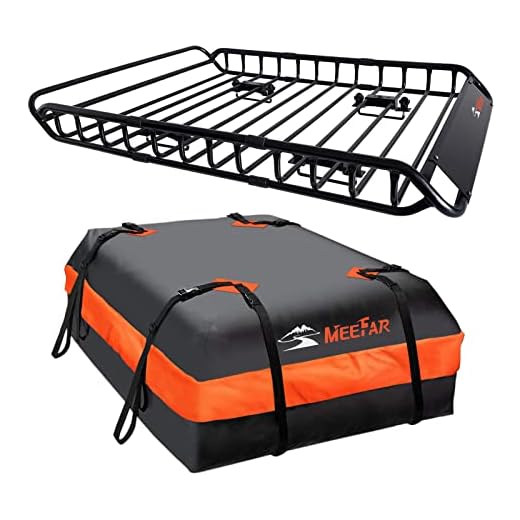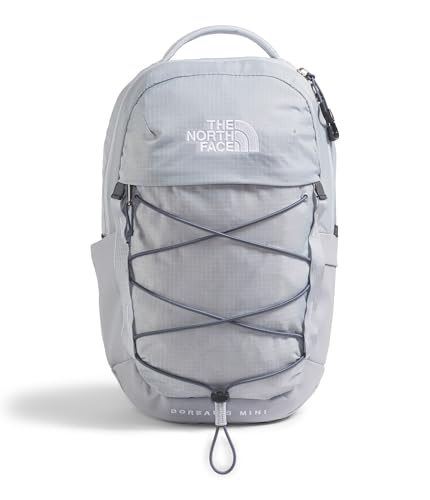





To optimize space for your travel items, first assess the layout of your vehicle. Remove any unnecessary objects, including floor mats and reusable shopping bags. A clear space allows for better organization.
Utilize soft-sided containers or compression bags for clothing. They adapt to the available space and can significantly reduce bulk. Consider rolling garments instead of folding them to minimize wrinkles and save volume.
Employ every nook and cranny. Stuff shoes with socks or small items, place heavier objects at the bottom of the trunk, and leverage the areas under seats. A well-planned strategy will maximize capacity without compromising comfort.
Secure larger items with cargo nets or straps to prevent movement during travel. This practice not only protects your belongings but also enhances safety by reducing distractions while driving.
Lastly, make a list of essentials beforehand. Prioritize items based on necessity and availability at your destination. Having a clear plan ensures you don’t overload, keeping your vehicle manageable and your travels enjoyable.
Maximizing Space in Your Vehicle
Utilize every inch of available area by employing packing cubes or compression bags. These help organize items while reducing their volume, enabling you to fit more into your trunk or backseat.
Prioritize placement based on weight and accessibility. Heavier items should be positioned low and towards the center for stability, while lighter and frequently needed articles are better placed on top or within easy reach.
Consider using roof racks or cargo carriers for larger items, allowing interior space to remain functional and freeing up more room for passengers. Ensure that any additional carriers are securely fastened to avoid shifting during transit.
Remove unnecessary items from the interior before packing. A decluttered environment not only increases capacity but also improves passenger comfort and safety.
Use vertical storage solutions wherever possible. Items like bags and boxes can be stacked efficiently to make the most of the vertical space available.
Wrap fragile objects in clothing or soft materials to save space while providing protection during transport. This approach conserves packing materials and enhances overall organization.
Always assess the size of your load against the vehicle’s specifications. Overloading can affect handling and performance, so it’s wise to ensure that everything you pack is within the vehicle’s comfort zone.
Regularly check online resources for tips and strategies tailored to your specific model, as many manufacturers provide guidance on optimizing space for their vehicles. Engaging with community forums can also yield innovative methods others have discovered.
Maximizing Trunk Space with Organized Packing
Utilize packing cubes to compartmentalize items. These help maintain order and make retrieval easier. Consider assigning different colors for various categories, such as clothing, shoes, and toiletries.
Employ soft-sided bags whenever possible. They tend to conform to available spaces, filling gaps better than rigid containers.
- Strategically position heavier items on the bottom for stability and balance.
- Use all available nooks and crannies, such as around the spare tire.
- Empty any bags and containers before loading to maximize usable space.
Consider using vacuum-sealed bags for clothing to reduce volume and protect from moisture. This allows for more items to be packed efficiently.
- Pack shoes inside other bags to utilize interior space.
- Store snacks and essentials in accessible spots, reducing clutter and facilitating easy access.
Lastly, when participating in activities like cycling, incorporating compact gear such as the best cycling waist packs can keep necessary items organized and easily reachable without taking up trunk space.
Utilizing Roof Racks and Cargo Carriers
Invest in a quality roof rack to maximize storage capacity on top of your vehicle. Ensure the rack is compatible with your vehicle model for secure installation. Choose a model with adjustable crossbars to accommodate different cargo lengths, allowing versatility for various items.
Types of Cargo Carriers
Cargo carriers come in two main types: soft-sided and hard-sided. Soft-sided options are lightweight and can be folded for easy storage when not in use. Hard-sided carriers provide more security and weather resistance, making them suitable for longer trips or variable conditions. Select a design that aligns with your travel needs.
Loading Techniques
Distribute weight evenly across the roof rack to maintain vehicle stability. Place heavier items at the base and lighter ones on top. Straps or bungee cords should be used to secure all cargo, preventing shifting during transit. Regularly check straps during stops to ensure everything remains tightly fastened.
Choosing the Right Vehicle for Luggage Capacity
Select a vehicle designed for ample storage to optimize your travel experience. SUVs and minivans typically offer the highest trunk space, accommodating larger items comfortably. Pickup trucks provide versatility with their open beds for oversized gear. For those preferring compact models, consider hatchbacks with foldable rear seats, maximizing interior volume.
Considerations for Vehicle Selection
Assess the number of passengers alongside storage needs. Some larger families may need multiple rows of seating while still prioritizing cargo space. If traveling frequently with equipment, look for vehicles featuring built-in storage compartments or attachable racks. Always check the manufacturer’s specifications to confirm luggage capacities and space configurations.
Additional Tips
Incorporating stylish roof boxes and trailers can enhance carrying capability. Research compatibility with your chosen vehicle, ensuring both safety and legal requirements are met. Always drive within your vehicle’s limits to avoid mishaps. For insights on unexpected events, refer to how a car accident can impact your life.
Safety Tips for Driving with Heavy Loads
Distribute weight evenly across the vehicle to maintain balance and stability. Place heavier items on the bottom and towards the center to lower the center of gravity, reducing the risk of tipping.
Check the vehicle’s weight capacity and avoid exceeding it. Refer to the owner’s manual for specific guidelines regarding overall weight limits and axle ratings.
Ensure all items are securely fastened. Use straps or bungee cords to prevent shifting during transit, which can disrupt handling and cause accidents.
Maintain a greater following distance. Stopping distances increase with a heavier load, so allow for more space between vehicles to ensure safety on the road.
Reduce speed when carrying significant weight. This enhances control and minimizes the risk of losing stability or handling issues during turns and braking.
Regularly check tire pressure and tread condition, as heavier loads put additional strain on tires. Proper inflation and tread depth enhance grip and reduce the likelihood of blowouts.
Before setting out, familiarize yourself with the vehicle’s handling characteristics while loaded. Each vehicle responds differently, and awareness can prevent mishaps.
Consider utilizing external accessories like roof racks or cargo carriers to distribute weight outside the main cabin. Secure these attachments properly to prevent detachment while driving.
Lastly, if traveling to a location with unpredictable weather conditions, prepare adequately. Having an appropriate best golf umbrella for push carts can prevent water damage to belongings and enhance overall travel safety.
FAQ:
What are some tips for arranging luggage in a car effectively?
To arrange luggage effectively in a car, consider distributing weight evenly throughout the vehicle. Place heavier bags at the bottom and toward the center of the trunk to maintain balance. Utilize space efficiently by filling gaps and using soft-sided bags that can be squished into smaller spaces. Use cargo organizers or bins to keep items secure and accessible, and make sure to leave enough room for visibility through rear mirrors.
How can I fit large suitcases in a smaller car?
Fitting large suitcases in a smaller car can be tricky, but there are several strategies to try. First, consider removing any non-essential items from the suitcase to reduce bulk. Utilize the back seat and fold down the rear seats if possible, as this can significantly increase your cargo area. Additionally, you might want to consider using a roof rack or cargo carrier if the weather allows. Packing efficiently, such as using packing cubes, can also help maximize space.
Is it better to use soft-sided luggage or hard-shell bags for traveling by car?
Soft-sided luggage is often more versatile for traveling by car due to its ability to conform to different spaces and be squeezed into tight spots. It’s usually lighter, making it easier to handle and fit in various compartments. Conversely, hard-shell bags provide better protection for fragile items and may be easier to stack. If your trip includes unpredictable weather conditions, choose soft-sided bags that can handle minor moisture without damage.
What should I consider before packing my car for a long trip?
Before packing your car for a long trip, consider the weight limit of your vehicle, as exceeding this can affect handling and fuel efficiency. Think about how often you’ll need to access certain items during the trip to place those at the top or in easy-to-reach areas. Ensure that all valuable or fragile items are safely stored and secure to avoid damage during travel. Also, be aware of how your packing may impact visibility and comfort while driving.
How can I keep my luggage organized during a long car trip?
To keep your luggage organized during a long car trip, use packing cubes or organizers that allow you to categorize items such as clothing, toiletries, and electronic devices. Label your bags for quick identification. It’s also helpful to designate a specific area in the car for different types of items, like snacks or entertainment. Regularly check and reorganize if needed to maintain order as you access different bags throughout your journey.







